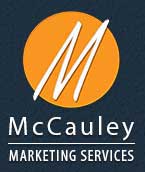Journalism v. Public Relations Part 2: When Journalists and Public Relations Professionals Work Together
 In our last discussion about the differences between public relations and journalism, we covered how technology has made it seem like the two fields are a single entity. While it’s important for news organizations to keep their objectivity when copy writing, they do still rely on public relations consultants to obtain information about businesses and individuals.
In our last discussion about the differences between public relations and journalism, we covered how technology has made it seem like the two fields are a single entity. While it’s important for news organizations to keep their objectivity when copy writing, they do still rely on public relations consultants to obtain information about businesses and individuals.
In essence, journalists and public relations firms are dependent on each other to do their jobs. For example, while journalists are meant to do their own research and reporting, it is generally accepted that they “copy and paste” chunks of information straight from press releases. In addition, public relations professionals need the access to the public that journalists can provide.
This means that while it is imperative to portray the organizations they represent in the best light, it is important for public relations professionals to uphold themselves in an ethical manner. The Public Relations Society of America, therefore, has a code of ethics in which it advises public relations professionals to “protect and advance the free flow of accurate and truthful information.” This means that while it is the PR consultant’s job to portray their client in the best possible way, they cannot portray the client inaccurately.
PR firms who have performed their jobs unethically often overshadow the good that comes from journalists and PR professionals working together. We can all easily recall PR disasters from the past: Toyota officials’ refusal to acknowledge malfunctioning accelerators; a certain Super Bowl event that coined the pop culture term, “wardrobe malfunction;” or the Enron accounting scandal. However there were many situations that in which public relations consultants performed honestly and worked with journalists to make sure information was correct and to amend any mistakes made.
When JetBlue airline planes became stranded in the north because of a winter storm, passengers were made to wait in planes on the tarmac for up to 10 hours. Afterward in an effort to manage their customer relations, JetBlue’s then-CEO, David Neeleman, utilized national television media to formally apologize to passengers and took out full-page newspaper ads to say JetBlue was sorry. The disaster brought about JetBlue’s “Customer Bill of Rights” that gave passengers refund and reimbursement options when their flights were canceled or delayed.
Though the two professions seem to always be in contention with one another, if both perform their jobs ethically, they can use each other symbiotically to inform the public about important events and goings-on with businesses and organizations that have an impact on the community.
For more information on public relations or marketing check out the McCauley Marketing Services’ website. Stay up to date on news and blogs by following us on Facebook and Twitter.
